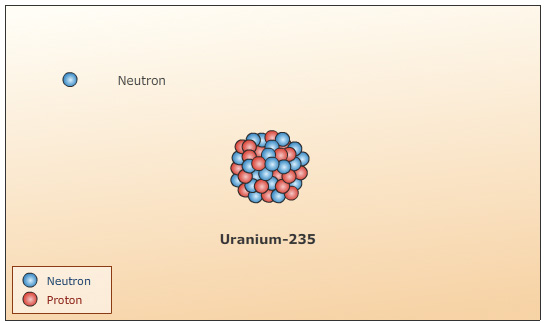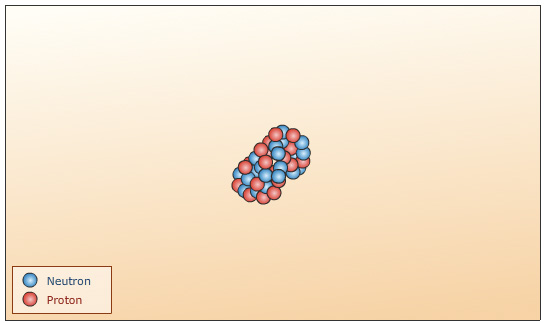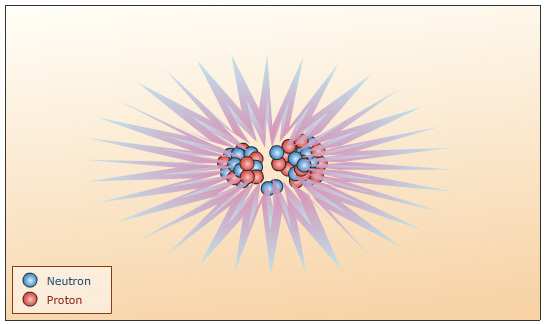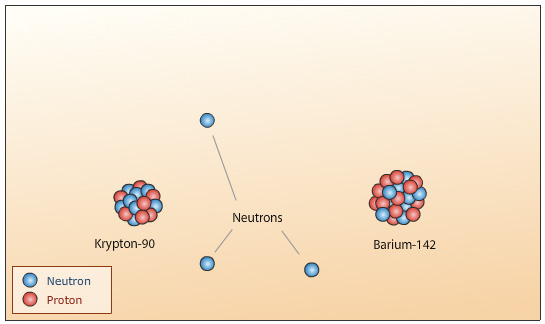What is Nuclear Fission?
Nuclear Fission is the process in which the nucleus of a heavy atom, such as Uranium-235 or Plotonium-236, is split into two smaller or daughter nuclei and three neutrons along with the release of energy when bombarded by a slow moving neutron.
Nuclear fission releases a tremendous amount of energy. The mass of products from the fission reaction are slightly less than the mass of the parent nucleus. The mass that is lost in the reaction has been converted to energy. The amount of energy released from this mass can be calculated using Einstein's equation below:
Energy Released = mass x [velocity of light]2
(Joules) (kilograms) (meters per second)
or E = mc2
The energy resulting from the mass loss is in the form of kinetic energy of the daughter nuclei and neutron and electromagnetic radiation in the form of gamma rays.
The animation below shows the mechanism of nuclear fission.

A slow moving neutron bombards a heavy Uranium-235 nucleus. The neutron is absorbed by the nucleus to produce a Uranium-236 nucleus. This neutron rich nucleus is unstable and begins to oscillate.

The unstable energetic nucleus distorts and the repulsion between the protons begins to separate the nucleus.

The repulsion between the protons becomes strong enough to separate the nucleus into two separate nuclei along with the release of a large amount of energy.

Two daughter nuclei are formed from the fission and possess a large amount of the energy from the nuclear reaction in the form of kinetic energy. These are accompanied with three neutrons.
